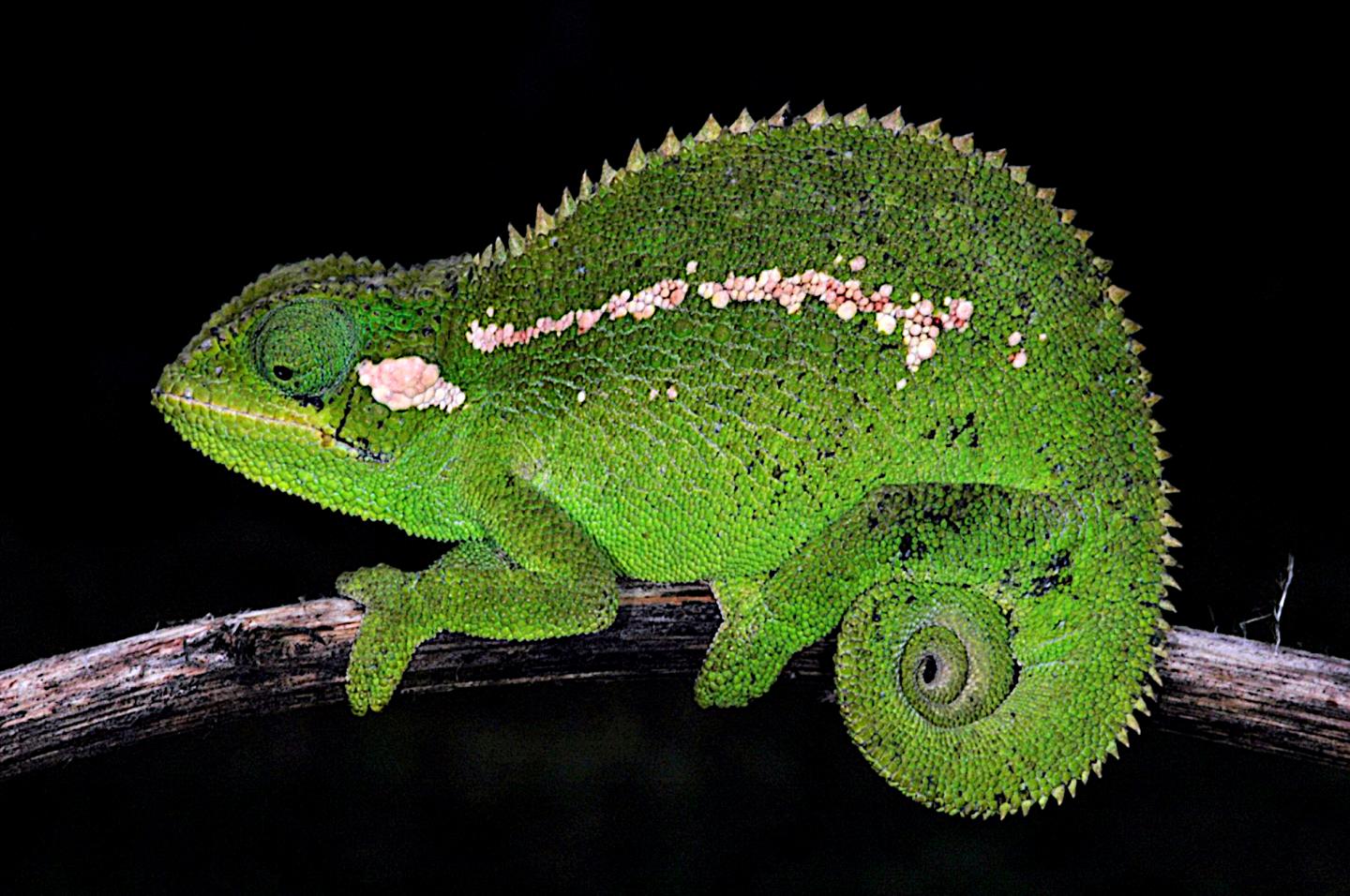
Credit: Koppetsch et al.
The Bale Mountains in south-central Ethiopia are considered to be one of the most unique centers of endemism, with an extraordinary number of plants and animals that can only be found there. Numerous species are already known from this Afromontane high-elevation plateau, making it a biodiversity hotspot, but ongoing research continues to reveal the presence of so far unknown and undescribed organisms.
Zoologists Thore Koppetsch and Benjamin Wipfler of the Research Museum Alexander Koenig in Bonn, Germany, and Petr Nečas from the Czech Republic, describe one such species: a new small-sized chameleon living on the edge of the forest. Their findings were published in the open-access, peer-reviewed life science journal Zoosystematics and Evolution.
There were already two species of the chameleon genus Trioceros known to be restricted to the Bale region when Thore Koppetsch and his colleagues discovered another unique representative of this group from the northern slopes of the Bale Mountains. Interestingly, this new chameleon is considered to be part of a species complex of the wide-spread Ethiopian Chameleon Trioceros affinis. Previous studies have indicated divergence between its different populations across the Ethiopian Highlands – with some of them separated by the northern extension of the Great Rift Valley, which also shaped the evolution of early humans.
The new chameleon, Trioceros wolfgangboehmei, has a special name. It honours the scientific work of Wolfgang Böhme, senior herpetologist at the Zoological Research Museum Alexander Koenig in Bonn, and his passion for chameleons and other reptiles.
Apart from its biogeographical patterns, the new species also has a characteristic appearance, displaying enlarged spiny scales on its back and tail that form a prominent crest. It usually lives on small trees and bushes at an altitude of above 2,500 m above sea level.
“Given the variation in colour patterns and morphology between different populations of these chameleons in Ethiopia, it is likely that these groups still bear a higher hidden diversity than expected, which might be revealed by further ongoing investigations” Thore Koppetsch notes. Furthermore, the research team urges for sustainable preservation and conservation of its habitat to mitigate the impact of human activity.
###
Original source:
Koppetsch T, Nečas P, Wipfler B (2021) A new chameleon of the Trioceros affinis species complex (Squamata, Chamaeleonidae) from Ethiopia. Zoosystematics and Evolution 97 (1): 161-179. https:/
Media Contact
Thore Koppetsch
[email protected]
Related Journal Article
http://dx.





